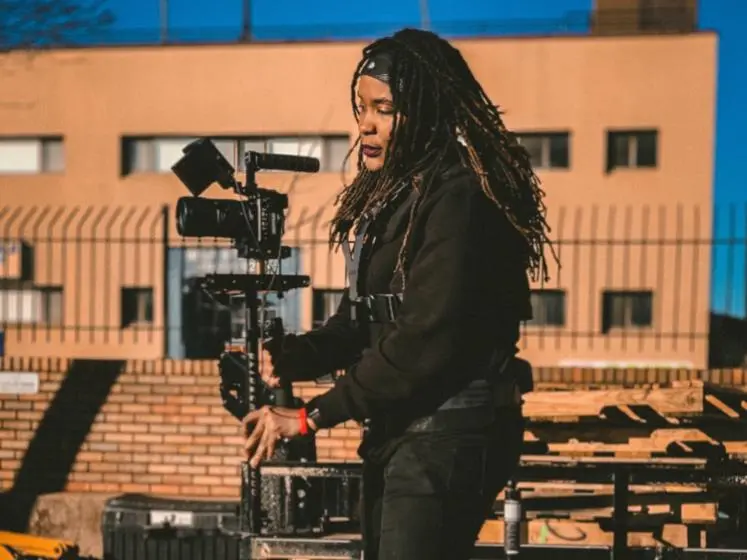UK film sector failing to tackle systemic discrimination of BAME individuals

Policies put in place to improve diversity in the UK film sector are failing to create real change, with the industry still beset by a number of deep-seated inequalities and structural barriers to increasing the representation of BAME individuals both on and off-screen.
Despite decades of policy interventions aiming to improve diversity across the sector, analysis by Dr Clive Nwonka within the Department of Sociology at the London School of Economics and Political Science (LSE) reveals that Britain’s black and ethnic minority population remain excluded from key areas of the industry, with BAME representation still mostly located in secondary roles rather than as lead characters or in key production roles.
Dr Nwonka examined data from 235 film productions which entered principle photography between June 2016 and March 2019 against British Film Industry (BFI) Diversity Standards. This dataset was also the basis of the BFI Diversity Standards Initial Findings report published in January.
The BFI launched its Diversity Standards in 2016 to address the continuing issue of underrepresentation. Productions seeking funding through the BFI Film Fund must meet: three of six criteria listed for Standard A, which relates to on-screen representation; two of four criteria for Standard B, which focuses on creative leadership and project team behind the camera; two of four criteria for Standard C, which focuses on new entrants and development opportunities; and two of five criteria of Standard D, which looks at audience development practices in exhibition[1]. The Diversity Standards cover a range of Under Represented Groups (URGs) as defined in the UK Equality Act 2010 including but not limited to gender, race/ethnicity and sex orientation [2]. The researchers looked at the proportion of film productions that met at least one criterion for Standard A and B.
While race/ethnicity was the second most represented group of the list after gender, just 50 per cent of all productions met the criteria for on-screen representation of BAME individuals, (compared to 63 per cent for gender), with only 40 per cent meeting the standard for workforce diversity (compared to 71 per cent for gender). The study also found that:
- BAME individuals were twice less likely to get department head and key off-screen roles
- BAME individuals were over three times less likely to gain crucial first job, early career and career progression roles that BAME individuals.
- BAME individuals were nearly twice less likely to receive crucial mentoring roles in the industry.
- Black and ethnic minority groups outside of London are severely excluded and underrepresented in films.
The researchers also examined the frequency that URGs were cited as evidence to meet the Standards. Out of 1,151 references to URGs on-screen, just 259 related to race/ethnicity (23 per cent). This is close to the number of on-screen gender references (25 per cent). The picture citations for off-screen URGs is markedly different however, with 24 per cent of films referencing race/ethnicity as evidence of meeting Standard B, compared to 49 per cent for gender.
Dr Clive Nwonka, an LSE Fellow in Film Studies within the Department of Sociology at LSE, said: "The BFI Diversity Standards has performed a crucial role in focusing attention on the issue, but our analysis shows that racial underrepresentation remains a structural condition within the sector, both on and off-screen. BAME individuals still face significant inequalities and our analysis suggests that the Diversity Standards is not yet robust enough to respond to the intersectional and multi-dimensional nature of racial inequality in the industry.
"While there is a relationship between region, production setting, location, genre and the representation of race/ethnicity in the UK film industry, the available data is not detailed enough to give a clear picture to what degree these variables inform decisions. Furthermore, while qualitative data does provide insights, the film industry has yet to recognise the full scale of structural racism experienced by BAME individuals. As a result, more sophisticated forms of racial inequality remain unchallenged."
The report provides a breakdown of representation of URGs across regions, settings and locations, genres and budget. Among its findings are the that representation of BAME individual outside of London remains extremely poor, with some UK regions such as the East and West Midlands registering no representation of race and ethnic difference in their workforce.
Dr Nwonka makes a number of recommendations to improve the BFI Diversity Standards, including making race/ethnicity citations in Standard B compulsory for film productions, stricter criteria around race for films with higher production budgets and that that the BFI explore the viability of ‘proportional diversity’, where all films shot in London should have a 30 per cent Race/Ethnicity target on and off screen and specific Diversity Standard criteria to be met for film productions outside of London. More transparency and justification from production companies in relation to their casting and hiring decisions should also be required, particularly relating to clear roles and positions where there is a clear lack of racial and ethnic diversity.
The BFI should also ensure that data-capture methods continue to be developed to provide insights into the intersectional dynamics of underrepresented groups, and seek to broaden the impact of its diversity drive by developing stronger alliances with other funders, such as BBC Films and Film4 around how race/ethnicity is represented across the UK film sector.
Download Race and Ethnicity in the UK Film Industry: an analysis of the BFI Diversity Standards by Dr Clive Nwonka.